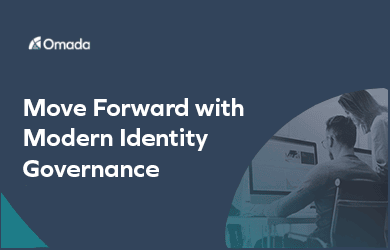By now, we are all familiar with the benefits associated with legacy-to-cloud migration of identity governance and administration (IGA) functionality. We also understand that moving from legacy systems to cloud computing is not a free ride. What is different in a cloud environment? Almost everything. That said, many of the challenges that come with data migration from legacy systems to cloud platforms can be overcome if you understand the nature of the migration process. In this post, we look at the threats that present themselves when an organization takes on the migration of legacy systems to the cloud, explain how to approach an IGA migration project and articulate best practices for successful legacy-to-cloud migration.
Three principal threats to legacy to cloud migration
1. Lack of security hygiene
Many aspects of security in a cloud infrastructure (public, private, or hybrid cloud) are the same as for any on-premises IT architecture. For an organization moving to the cloud, it is the differing aspects of the cloud environment that elevate the risk of migrating legacy systems to the cloud. Organizations that do not understand security hygiene in a cloud service infrastructure make it easier for attackers to interfere with cloud-hosted IGA. Cloud offers environments that are highly connected, making it easier for traffic to bypass traditional perimeter defenses. Insecure application programming interfaces (APIs), weak identity governance and credentials management, hackers, and malicious insiders pose significant security threats to successful cloud migration. Preventing vulnerabilities and unauthorized access when moving legacy IGA systems to the cloud requires configuring cloud platforms properly. To facilitate the successful migration of systems like legacy IGA solutions from on-premises to the cloud, an organization must ensure the day-to-day maintenance of the basic health and security of software and hardware assets. In addition, they must require strong passwords and multi-factor authentication (MFA) and build up network security measures at every level.
When embarking on a legacy migration to the cloud, it is important to remember that regardless of the cloud service infrastructure you choose, you are responsible for securing your legacy software and data. Microsoft, for example, makes this clear for users of their Microsoft Azure computing platform in a Shared Responsibility Model document. Using a cloud-managed environment does not mean you can ignore security. Insufficient due diligence is a major cause of security failures for organizations moving from legacy to cloud. When moving legacy systems to the cloud, security is everyone’s responsibility.
2. Inability to address compliance requirements
When your organization is subject to specific regulations and compliance requirements (e.g., HIPAA, GDPR, SOX), your cloud service providers (CSPs) must enable your IGA solution to apply the same controls as your on-prem IGA solution so you can adhere to them. You must also address the challenge of data sovereignty and ensure that the data for which you are responsible remains compliant with the applicable laws of the countries in which it is stored. Again, in legacy to cloud migration, you are responsible for configuring cloud platforms to enable your IGA solution to protect data from unauthorized access, breaches, or loss.
Compliance regulations often require organizations to maintain audit trails and provide reports to demonstrate compliance. In cloud environments, it can be more difficult to collect and consolidate audit logs and generate comprehensive reports due to the distributed nature of the infrastructure. Implementing robust monitoring and auditing mechanisms becomes crucial to meeting compliance requirements.
3. Inability to manage dynamic cloud environments
CSPs are as dynamic as your business process and legacy-to-cloud migration is an ongoing process that must constantly adapt to the changes providers make to their environments. For example, in the on-premises environment, legacy identity lifecycle management tools that track a user’s role, job title, department, and lifecycle events such as role changes or terminations must be modified as the business process becomes more complex. To meet new functionality requirements, organizations usually develop custom code to account for it. Over time, these customizations break essential functionality, requiring organizations to expend resources to make it work. Legacy migrations to cloud platforms may be distributed across multiple servers and locations. CSPs can and do frequently change how they manage the assets they host. Organizations engaged in legacy to cloud migration must ensure their cloud-based IGA solution can apply the policies and procedures necessary to manage access and identity lifecycles effectively, including data retention periods and secure data disposal. Cloud platforms must also enable mechanisms for making sure these procedures are up to date.
CSPs may offer various levels of transparency regarding their infrastructure and security practices. Carefully evaluate these practices to ensure that their environments continue to enable you to implement your IGA solution and stay compliant. Have a clear exit strategy if the practices of the cloud platform your organization uses become insufficient for you to maintain compliance.
In the long run, addressing the challenges of migration to the cloud requires a combination of technical and organizational measures. It involves selecting trustworthy cloud service providers, implementing strong security controls, regularly auditing and monitoring data handling practices, and ensuring the cloud platform supports your IGA solution. It is also critical that organizations stay updated with evolving compliance regulations and ensure ongoing compliance assessments and adjustments as needed.
Identity Governance and Administration best practices are essential for successful legacy-to-cloud migration
As organizations strategize legacy-to-cloud migration, there are many challenges with which they must contend in order to ensure they have the capacity to continue to deliver the functionality that their legacy IGA provided. In many instances, legacy IGA solutions don’t have the capacity to scale their functionality to larger, more complex environments. The overly complex customizations some organizations made to their legacy IGA solutions can make migration difficult. In the migration process, a legacy IGA system may struggle to inform administrators who has access to what. It can be difficult for organizations to create the custom code that enables a legacy IGA to integrate with SaaS applications, to ensure appropriate access levels from on-boarding to off-boarding, and to manage new security vulnerabilities as they are discovered. Maintaining this level of functionality from legacy IGA solutions is usually a complex and expensive undertaking and frequently results in poor performance that can dramatically increase security risks.
SaaS-based Omada Identity Cloud meets the security, compliance, and efficiency needs of virtually any organization, removing cost and uncertainty from managing identities and access before, during, and after your legacy to cloud migration.
Legacy and homegrown systems have a broad attack surface, are not built with security as a priority, and are not updated on a regular cadence to protect against new security threats. Omada Identity Cloud contributes to maintaining regulatory compliance, makes operational tasks more efficient, and helps harden security controls. Omada protects sensitive and personally identifiable information and contributes to maintaining and acting on organizations’ security policies. From a central point, the Omada solution automates the control of privileged access and enables the comparison of current rights to what is appropriate, ensuring that identities are correctly provisioned.
The key to satisfying compliance requirements after a legacy-to-cloud migration is having full visibility into who has access to what systems, who is requesting access, and which identities may be high-risk. The Omada Compliance Dashboard provides an intuitive user interface to observe and control access rights. You can automatically identify potential problems and activate more comprehensive investigations of anomalous behavior in high-risk identities. Omada offers the ability to gain important insight through comprehensive logging; this gives a complete audit trail of user access, including business reasons for having specific access.
Carrying out legacy-to-cloud migrations of IGA with Omada Identity Cloud enables customers to seamlessly integrate legacy IGA processes across their entire organization. Right out of the box, customers can use the Omada SaaS platform’s configurable connectivity framework to integrate applications without difficult custom code development. Data mapping configuration and support for industry-standard protocols like ODATA, SCIM, SOAP, and REST enables Omada Identity Cloud to quickly onboard applications and cloud services.
With legacy and IGA solutions developed in-house, upgrades are complicated, resource-intensive, and prone to errors. Omada’s SaaS platform delivers an intuitive user interface, enabling administrators to run instant upgrades to the Omada Identity Cloud solution. The SaaS platform facilitates easy management that enables users to easily set up new environments, edit existing ones, and delete obsolete ones. Having these robust features available in a SaaS platform enables users to leverage critical IGA capabilities without the need for additional staff or outside management.
Omada Identity Cloud is a proven solution that enables you to deploy best-practice IGA processes and workflows out of the box and easily adapt them to your unique business requirements. Using a template-based approach, the solution configures to any IT system or cloud application using automation of processes – without the need for code development. Omada Identity Cloud provides modern access automation, reconciliation, and reporting capabilities to ensure that you have full oversight of access rights. Best of all, using a standardized implementation approach and knowledge transfer we can deploy Omada Identity Cloud with you in 12 weeks, dramatically reducing your risk and accelerating time to value. Contact us to see how we can help you.

























